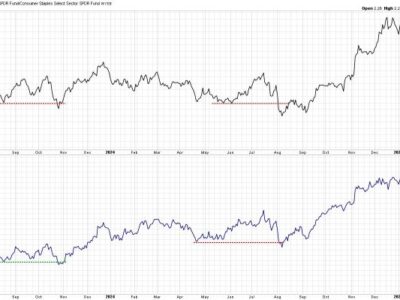
Over the last year, news media have run numerous stories of offices, shopping malls, and other commercial properties going into foreclosure or being sold at substantial discounts. Given local government’s reliance on property tax revenues, a collapse in commercial property values might appear to have disastrous consequences for city and county finances. But circumstances differ widely from one region to another (and even between local governments within a region), so the impact of the commercial real estate decline will vary greatly.
Among the factors we must consider when evaluating the revenue impact of lower commercial real estate valuations are, first, what proportion of revenue comes from property taxes on commercial real estate, next, how closely assessed values tracked market values before the collapse, and finally, whether and when properties will be reassessed to conform with reduced market prices more closely.
San Francisco—a city at the epicenter of the commercial property collapse—provides an example of how to evaluate these three factors. (For more about why San Francisco finds itself at the epicenter please see my recent post on the city’s policy failures.)
Commercial Property Tax Dependency
Local government is heavily reliant on property taxes generally, but many entities diversify their revenue sources with income taxes, sales and excise taxes, and other levies, as well as non‐tax revenues.
San Francisco anticipates $6.4 billion in revenue in fiscal year 2023–24. Of this total, $4.4 billion is expected to come from tax revenues. The combined city/county government levies a variety of taxes aside from the property tax, including sales tax, hotel room tax, utility user tax, parking tax, real property transfer tax, sugar sweetened beverage tax, and a unique tax on executive pay. Property taxes are expected to contribute $2.5 billion of the $4.4 billion of anticipated tax revenue.
Since the current real estate valuation slump is only affecting certain categories of properties, it is also essential to understand how assessed value breaks down by category. According to San Francisco Assessor’s latest annual report, three major commercial property categories (office, retail and hotel) accounted for 27% of total assessments in 2021. This proportion slightly understates the share of property tax revenue derived from commercial property, because only residential property is eligible for a homeowners’ exemption. In California, this exemption is only $7,000 per owner occupied property and thus not as significant a factor as in Texas.
Overall, San Francisco’s commercial property valuation decline places at risk about $700 million of annual revenue or about 11% of total general fund collections. It is easy to see how this proportion might vary across cities and counties. Suburban communities that are primarily residential are likely to have very little exposure to commercial valuations, while cities hosting large malls and office clusters should be at greater risk.
Assessed Versus Market Values
Due to Proposition 13, the relationship between properties assessed and market value is complex. The 1978 measure limited assessment increases to 2% annually if a property does not change hands and is not subject to major construction. For properties that have not been reassessed since Proposition 13’s implementation, their market values have risen about ten‐fold on average, but their assessed value have increased by a factor of only about 2.4.
While it is unlikely that many high‐value commercial properties have avoided reassessment through the entire life of Proposition 13, significant gaps between assessed and market value have emerged over shorter periods: between 2012 and 2022 alone, California property prices more than doubled (it should be noted that I am using a residential price index for these value increases; the changes in commercial property valuations are likely to be different).
To reasonably estimate the potential impact of underassessments, it would be necessary to review a sample of local properties. San Francisco’s City Controller is performing such an analysis but the results have yet to be published.
While no other state has Proposition 13, there can still be variances between assessed and market valuations outside of California. For example, a Georgia property assessor reviewed a sample of ten commercial properties and found that, on average, they were assessed at 40% below market value (his findings were published in a paywalled edition of Fair & Equitable, the magazine of the International Association of Assessing Officers).
Reassessment Timing
Just as assessments may not reflect market values on the way up, they may also lag declining resale values. But this is less affect is less likely to persist given the incentive that property owners have to minimize their property tax liabilities.
In California, property owners can ask their assessor for a reduction, and, if not satisfied, they can appeal the assessor’s decision to a county board. San Francisco’s Assessment Appeals Board has an active docket of appeals cases at the moment, with some filers requesting assessment reductions of more than 50%. In one extreme case, the owner of the Westin St. Francis Hotel in San Francisco’s Union Square is seeking a 90% reduction in its assessed valuation.
Owners of commercial real estate may hesitate to seek downward reassessments if they are marketing their properties since potential buyers might use the lower assessment as a basis for negotiating a sales price. And, in California, at least, retroactive reassessments are not possible. So, in some cases, a commercial property may be assessed above market value at least during the current tax year.
Conclusion
Although San Francisco may be considered ground zero for the commercial property collapse, the budgetary impact has been limited this far. The city’s FY 2022–23 revenues are running just 1% below prior year levels and the city is forecasting small increases for the next five fiscal years. That said, these are nominal amounts, and it is fair to conclude that San Francisco’s projected revenues are expected to grow at or below the rate of inflation and are significantly underperforming recent growth rates.
San Francisco is receiving some protection from undervaluation before the pandemic and revenue source diversification. That said, the city’s unique challenges may also impact its sales tax and hotel room tax collections as well as its property tax revenues.
For other jurisdictions, results can be expected to vary. Blanket nationwide assessments may well prove to be a poor substitute for an in‐depth look at each city’s and county’s unique characteristics.








